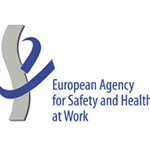Results of EU-OSHA Survey on OHS Management Released

On June 23, 2015, the European Agency for Safety and Health at Work (EU-OSHA) released the results of a survey of almost 50,000 public and private enterprises on OSH management and workplace risks.
The questions were addressed to those that best knew about OSH management in the organization. Respondents answered questions on the major risk factors in their enterprises, reporting on how and why they manage these risks as well as identifying barriers to prevention.
Here’s a look at some of the survey’s key findings.
According to the survey results, 76% of establishments in the EU-28 carry out risk assessments regularly. The majority (90%) of those that carry out regular risk assessments regard them as a useful way of managing health and safety, a finding that was consistent across activity sectors and establishment sizes. And 81% involve their employees in the design and implementation of measures that follow a risk assessment.
(Use this risk assessment questionnaire based on CSA Z1002 or this job hazard assessment form to assess your workplace.)
Looking at those establishments that don’t carry out regular risk assessments, the main reasons given for not doing so are:
- The risk and hazards are already known (83%); and
- There are no major problems (80%).
Most establishments (90%) in the EU-28 report having a document that explains the responsibilities and procedures on health and safety, particularly in larger establishments.
Health and safety issues are discussed at the top level of management regularly in 61% of establishments in the EU-28, the proportion increasing with establishment size. And almost three-quarters of establishments (73%) report providing their team leaders and line managers with training on how to manage OSH in their teams
As to the reasons that motivate enterprises to manage OSH, fulfilling the legal obligation is reported to be a major reason by 85% of establishments in the EU-28. In some countries, particularly those that joined the European Union in 2004 and some of the candidate countries, the driver most frequently reported to be a major reason to address health and safety is maintaining the organisation’s reputation.
The second most important driver for action on OSH is meeting expectations from employees or their representatives.